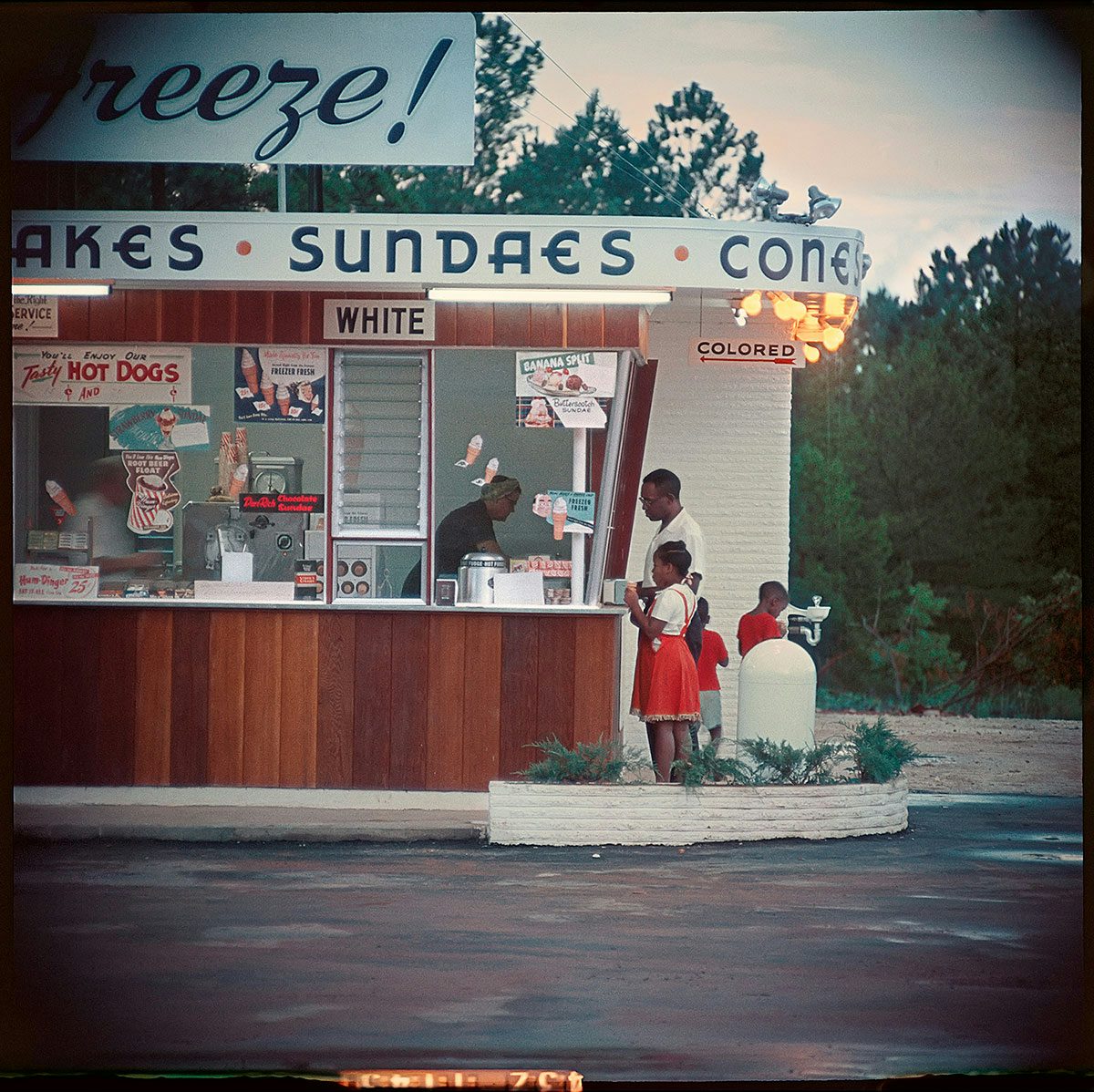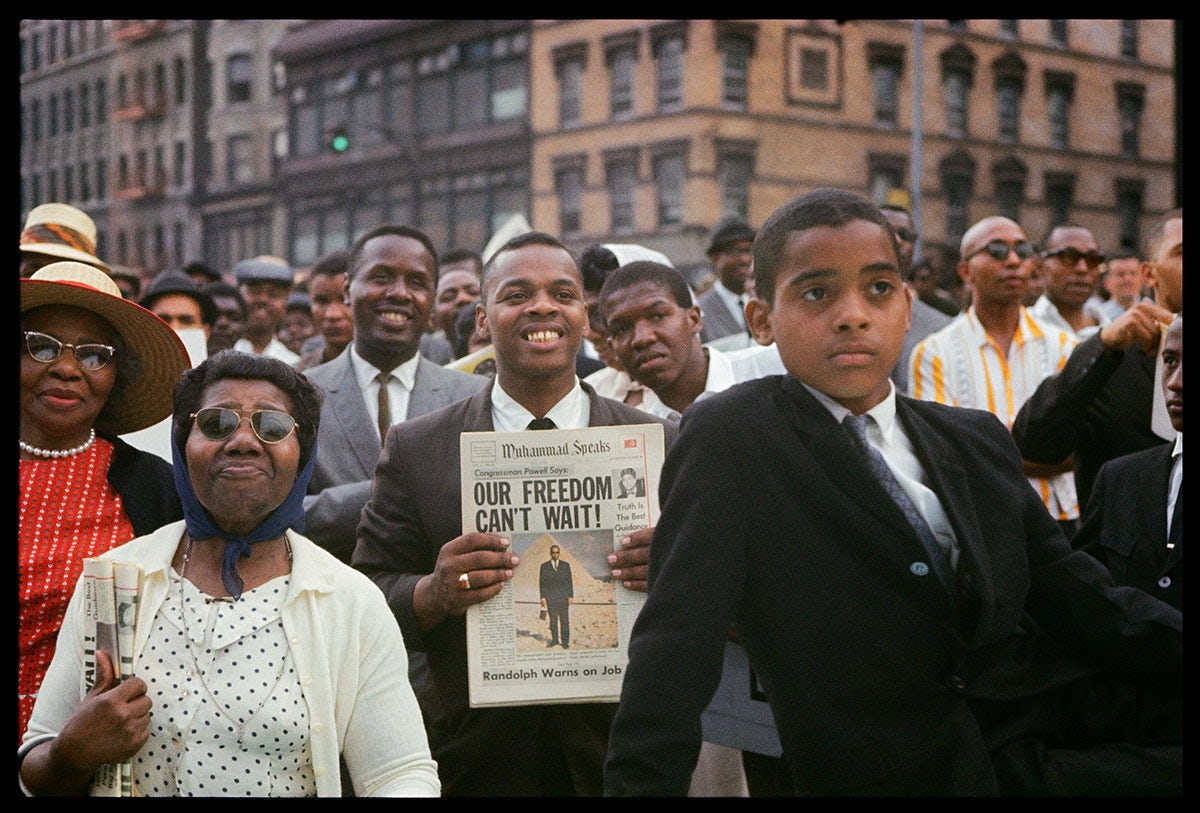Born into poverty and segregation in Fort Scott, Kansas, Gordon Parks took photographs that focused on race relations, poverty, civil rights and urban life. He was the first African American staff photographer and writer for photography magazine, Life, and through this position, Parks documented American culture and early life from the 1940s to the 2000s.
Some of this legacy is on show now at the Alison Jacques Gallery in London, in the first of a two-part exhibition of his work. The exhibition was originally scheduled to run in March, but due to Covid-19 it wasn’t only delayed, but split into two parts, with Gordon Parks: Part One on now until August 1, and Part Two opening September 1. The exhibition is the first solo show of his work in Europe for 25 years.
“Until recently, Gordon Parks was seen solely as a photojournalist, and people didn’t fully understand everything about him as an artist,” explains Alison Jacques, founder of the gallery. “The Gordon Parks Foundation has been actively revisiting his work and looking to put Parks out there in the right way, which is that he is one of the most important artists, rather than simply a photojournalist.”

His newly-shaped reputation as an artist is solidified by his other creative achievements including writing – both fiction and non-fiction – composing and filmmaking, having directed several feature films including Shaft in 1971. But if you’re looking for an introduction to Parks, his photography is the perfect place to start. Part One offers a chance to see two defining series, Segregation in the South (1956) and Black Muslims (1963), while Part Two will see his thought-provoking portraits of boxer and activist Muhammad Ali from 1966-1971 go on display.
The words ‘groundbreaking’ and ‘radical’ are often touted when talking about Parks’ images, and what Jacques sees as unique about his work was his creative process. “In the case of the series Segregation in the South, when he went to Alabama, Parks didn’t just go and photograph people, he got to know them, he lived with the families,” explains Jacques. “That’s something he did throughout his life and [was] how he made his work. He got to know the people, as opposed to just photographing them objectively, so it became subjective.”

Segregation in the South is one of Parks’ seminal series and it saw him return to a community where segregation was the norm. The particular beauty of this series lies in the non-confrontational way the photographer captured this reality. “You have these beautifully composed, breathtakingly colourful images such as the one of a family queuing up to buy ice cream,” says Jacques. “But slowly, you realise what actually is going on. At the main entrance to the ice-cream kiosk hangs a sign saying ‘White’, and then there’s a sign at the side, saying ‘Colored’, where the family stands.”
The personal, more humanised way he captured discrimination was of course intentional. But the work feels even more moving when you understand the background to those images. “If you read Gordon Parks’ diaries, there’s a section in there from 1956, which talks about what he encountered when he was in Alabama. When he got there, the person who was assigned to him to show him around the different areas of the town, was actually informing a group of right wing white men who were looking to pursue and potentially lynch him,” explains Jacques.
“So while he was taking these beautiful photographs, there were nearby Klu Klux Klan members burning people for their colour. That was the brutal reality, but in the photographs he’s not confronting it head on, which I think makes it all the more powerful.”

Parks’ series Black Muslims provides insight into the Black Muslim movement that had started to gather momentum in the US at the beginning of the 1960s. Parks gained unparalleled access and captured scenes of peaceful protests and families at prayer, as well as powerful portraits of Malcolm X and Ethel Sharrieff.
Again, through his personal style, Parks was able to question preconceived and prejudiced attitudes towards the Black Power movement. Together, these bodies of work highlight his determination in illuminating the inner lives of his subjects and, in some cases, completely changing the nation’s opinion.

This year has been one of incredible change and upheaval, and with the Black Lives Matter movement gaining more momentum in the last few months, Parks’ images – though they’re over 60 years old – somehow carry even more weight now. It’s uncomfortable to admit, but Parks’ images are both a reflection of the past, and hold a mirror up to our present.
“The timing of this [show] is very poignant, although it is absolutely not intended and is in no way opportunist,” clarifies Jacques. “The most important thing, when you look back at the date of these photographs in the current show, is that whatever it is you’re seeing and understanding from that time, the message and voice of Parks is as relevant today in 2020 as it was in 1956. What I hope is that it will be listened to, perhaps louder than it was then.”

For Jacques, the enduring power of Parks’ photography is that you learn something through each series and each story he told – whether it’s about a period of history, a movement or an individual person.
“It’s interesting that it’s taken 25 years for a gallery in Europe to hold a Gordon Parks show,” she says. “There’s a lot of change in the air right now, and a lot of change for the better, and hopefully this is a small contribution.”

Gordon Parks: Part One is on now until August 1. Gordon Parks: Part Two is due to open September 1 – October 1 2020 at the Alison Jacques Gallery, London; gordonparksfoundation.org
The post Why the photography of Gordon Parks still resonates today appeared first on Creative Review.
from Creative Review https://ift.tt/2WGKux1

No comments:
Post a Comment